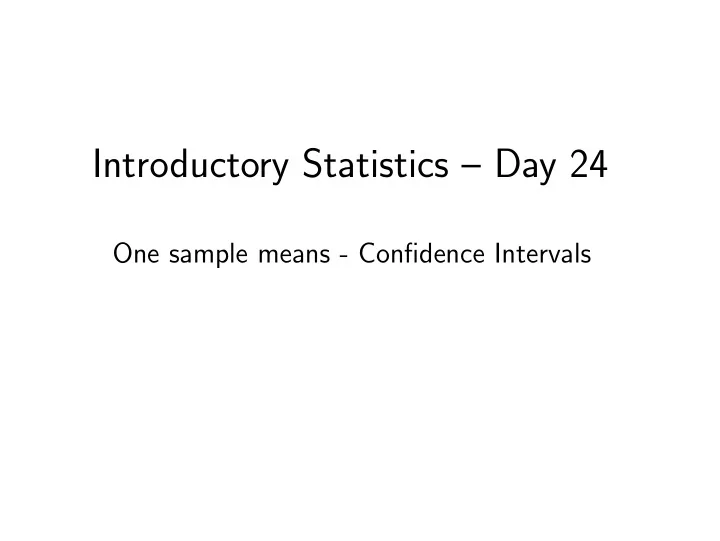

Introductory Statistics – Day 24 One sample means - Confidence Intervals
4.3 – One sample means -Confidence Intervals Background information If you conduct a hypothesis test and reject the null hypothesis, use a 1 confidence interval to provide a new estimate for the population mean. In exploratory research, you may not yet have a theory about the 2 population mean you are investigating. In this situation, you may create a confidence interval without first working through a hypothesis test. Walk through Excel commands for calculating the t-critical score, using 3 t.inv(lower tail) or t.inv(upper tail)
Return to the census data from the previous section. Scenario A: We often use confidence intervals when we want to estimate a parameter (age, weight, income, etc.) and we do not have a prior theory we are evaluating. Create a 95% confidence interval for average individual income for adults (18 and over) in each of the 5 states. State Point estimate ¯ Margin of Error 95% confidence interval x MT ND OR UT WA
Scenario B: Split the data for male and female adults. Find a 98% confidence interval for the average income for adult men. Scenario C: Find a 98% confidence interval for the average income for adult women. At this point, you might be curious whether there is a significant difference between the average incomes for men and women. In the next section, we will learn how how to compare means for two samples. In the meanwhile, based on your confidence intervals, do you anticipate we will find a statistically significant difference in average incomes for men and women? Why?
Scenario D: The consumer advocacy group who was investigating the 100 calorie snack packs (in Sect 4.1) has conducted an investigation of the Preztels-R-Us 100 calorie packs. They collected a random sample of 20 packs and found an average of ¯ x calories = 118 and a standard deviation of s = 23 . Conduct a hypothesis test. 1 Follow up with a 95% confidence interval for the average calorie count for 2 the Pretzels-R-Us bags. Scenario E: In Sect 4.2, you determined that the average age in Montana does not match the national average of 38 years old. Follow up with a 95% confidence interval for the average age of Montanans. Likewise, find a 95% confidence interval for the average age of people in Utah.
Recommend
More recommend